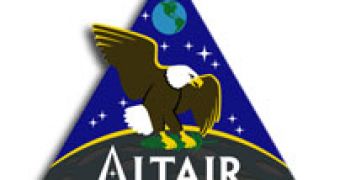More than three decades have passed since the last manned mission to the Moon and NASA hopes to change that within the next decade. Officials have revealed recently that they plan to send a manned mission to the moon by the year 2020. In order to do so however, they need a new lunar lander, previously referred to as the Lunar Surface Access Module.
Nevertheless, NASA decided that they cannot use an exclusive name such as LSAM for a lunar lander, so they have revealed the logo and the new name for the future spacecraft. Altair, as it is called, is named after one of the brightest stars on the night sky, situated in the Aquila constellation, which is an Arabic word derived from a phrase that means 'the flying one'.
This name has been specially chosen to make a parallel between the first lunar lander ever to arrive on the Moon, Apollo's 11 Eagle in 1969, and the name of the constellation in which the Altair star is situated, which originally meant Eagle in Latin. Furthermore, the logo of the Altair mission extends the connection between the two by using the same general theme that pictures an eagle holding an olive branch in its talons.
NASA hopes that similar to the previous mission to the surface of the Moon, the Altair lunar lander will be able to transport a crew of four and enough supplies to establish a permanent lunar base. In a similar procession, NASA revealed in the middle of last year the names and the logos for the two vehicles, Ares I and Ares V, which will be used to launch the lunar landers into Earth's orbit. The new lunar program, Constellation, has been announced by president George W. Bush, in 2004 shortly after the tragedy that resulted in the loss of the space shuttle Columbia and its crew of seven, present on board.
The same name, Altair has been previously used as a name for the Orion crew vehicle, and for an unmanned aerial vehicle used for high-altitude measurements.
Currently, multiple nations are running probing missions on the surface of the Moon, such as China and Japan, both launching lunar orbiters in the fall of this year, and it seems that India will send one as well in late next year, thus the Moon seems to get a little crowded. Furthermore, the Google Lunar X prize contest has announced that it will offer a 20 million dollar reward to the first private company that will succeed in launching a lunar orbiter that will be able to send back pictures of its surface.
Russia will begin a series of lunar exploration missions as well, by the year 2012, after a break of 30 years in lunar exploration missions.

 14 DAY TRIAL //
14 DAY TRIAL //